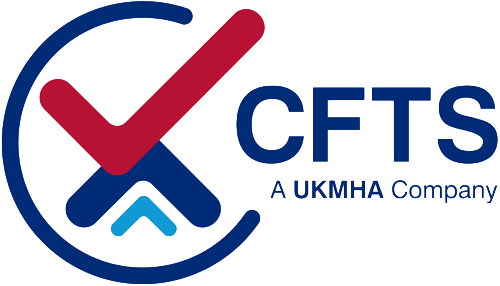Time to examine the examiners?
29 April 2022
Not all inspections are equal warns CFTS
Thorough Examination accrediting body CFTS is advising equipment owners to check not only who’s doing the assessment… but also the kit they’re using.
“If you’re responsible for materials handling equipment, then you are also responsible for ensuring it’s in safe working order, and that includes making sure that whoever is carrying out your Thorough Examination is doing so to the standards required by HSE,” says Geoff Martin, CFTS Chairman.
“Importantly, just as all Thorough Examinations are not the same, neither are the examiners or the equipment they use. The quality and scope of the kit they carry is a powerful first indicator of the likely quality of the inspection itself.
“If they are intending to genuinely inspect all safety-critical components – as required by LOLER and PUWER regulations – they will require a wide range of specialist tools. And those tools should be designed to deliver accurate, replicable measurements that reveal the exact increments of wear.”
According to Mr Martin, a properly equipped examiner should carry:
Professional Fork Wear Gauge: Precisely measures the percentage of wear (between 0-10%) on fork heels.
Professional Chain Wear Gauge: Accurately measures leaf chain and roller chain wear by indicating the percentage of elongation. This will show you how close your chains are to needing a replacement.
Digital or manual vernier caliper: Uses a calculation formula to measure wear on fork heels.
Fork wear caliper: Checks fork angle, fork hooks and fork blade maximum wear (only 10% and above).
Digital angle protractor and set square: Measures fork angles to ensure damaged or bent forks do not go beyond manufactured limits (typically +/- 3 degrees).
Other kit typically carried by a CFTS-accredited examiner (and very few others) includes: a harness for working at height, truck blocks to secure equipment, torches to inspect defects, UV torches for crack detection, toe jacks for better access, rachet straps to secure masts and forks, mast blocks for checking wear on mast pivot brushes and for securing equipment during steering inspections, cones or barriers to ensure inspections take place in segregated areas, rulers and tape measures.
“It’s important that, wherever possible, you can see for yourself the results of the examination,” says Mr Martin. “Tools like the fork wear and chain wear gauges used by CFTS-accredited inspectors allow you to see exactly how much wear there is.
“That transparency means you can be confident your equipment has been examined in detail, but gives you the reassurance that components such as chains are not being replaced or repaired prematurely.
“If your inspection provider doesn’t come equipped with the right tools, there is every chance your truck is not going to be inspected as thoroughly or as accurately as it should.”
CFTS has a nationwide network of highly trained, expert Thorough Examination providers available to provide in-depth inspections of a wide variety of work equipment.
